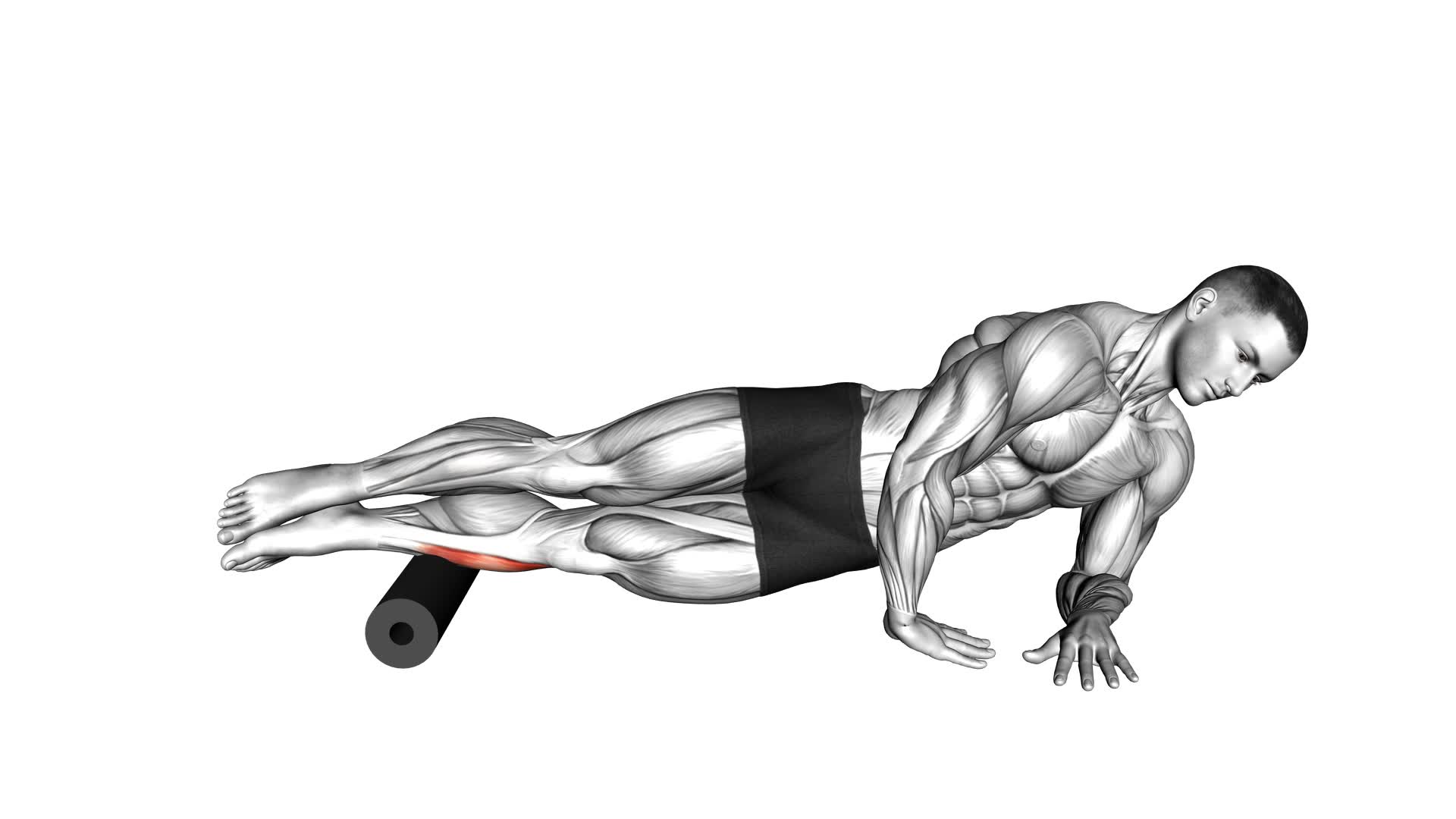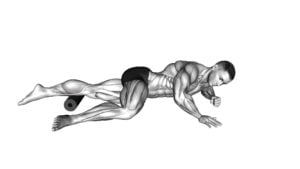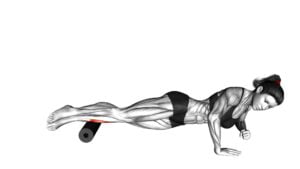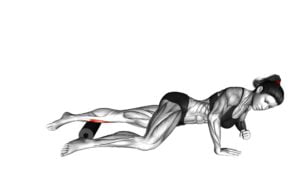Roll Peroneal Side Lying on Floor – Video Exercise Guide & Tips

Looking to improve your core strength and stability? Check out the Roll Peroneal Side Lying on Floor exercise!
Watch This Exercise Video
This video exercise guide provides step-by-step instructions and tips to help you perform the exercise correctly. Avoid common mistakes, learn modifications and variations, and discover how to incorporate this exercise into your workout routine.
Get ready to strengthen your core and boost your overall fitness with the Roll Peroneal Side Lying on Floor exercise!
Key Takeaways
- Increased stability and strength in the peroneal muscles
- Improved proprioception and body's awareness of position in space
- Enhanced lower body strength and overall fitness
- Proper form and technique are crucial to maximize the benefits of the exercise
Benefits of the Roll Peroneal Side Lying on Floor Exercise
You'll experience increased stability and strength in the peroneal muscles by performing the Roll Peroneal Side Lying on Floor exercise. This exercise offers numerous benefits that can help improve your overall fitness and lower body strength.
One of the key benefits is the targeting of the peroneal muscles, which are responsible for maintaining balance and stability in the ankle joint. By engaging these muscles through the rolling motion, you can enhance their strength and improve your ability to stabilize your ankles during various activities.
Additionally, the Roll Peroneal Side Lying on Floor exercise can also help with proprioception, which is your body's awareness of its position in space. As you perform the exercise, you're constantly challenging your body's ability to maintain balance and control. This can lead to improved proprioception, which is important for preventing injuries and enhancing athletic performance.
Furthermore, this exercise can be progressed to make it more challenging as your strength and stability improve. You can add resistance by using ankle weights or resistance bands, or you can perform the exercise on an unstable surface such as a foam pad or balance disc. These progressions will further challenge your muscles and help you continue to make gains in stability and strength.
Proper Form and Technique for the Roll Peroneal Side Lying on Floor Exercise
To ensure proper form and technique for the Roll Peroneal Side Lying on Floor exercise, it's important to focus on maintaining a stable position and engaging the peroneal muscles throughout the movement. This exercise is beneficial for injury prevention and muscle activation.
To begin, lie on your side with your legs extended and your bottom arm supporting your head. Place your top hand on the floor in front of you for stability. Keep your core engaged and your spine neutral throughout the exercise.
To initiate the movement, lift your top leg off the floor while keeping it straight. As you lift, roll onto your stomach, maintaining control of the movement. Your bottom leg should remain in contact with the floor.
Once you're on your stomach, slowly roll back onto your side, lowering your top leg to the starting position. Repeat this movement for the desired number of repetitions before switching to the other side.
Remember to focus on maintaining proper form and engaging the peroneal muscles throughout the exercise. This will help prevent injury and ensure optimal muscle activation. As with any exercise, start with lighter weights and gradually increase as your strength and stability improve.
Common Mistakes to Avoid During the Roll Peroneal Side Lying on Floor Exercise
When performing the Roll Peroneal Side Lying on Floor exercise, be careful to avoid these common mistakes.
One common mistake isn't maintaining proper form throughout the movement. It's important to keep your body in a straight line from head to toe, with your hips stacked and your shoulders directly above each other. Avoid letting your top shoulder collapse forward or your hips sag.
Another mistake to avoid is using momentum to roll from one side to the other. This exercise is meant to be controlled and deliberate, so make sure to engage your core muscles and use them to initiate the movement.
Lastly, be mindful of your breathing. Holding your breath can cause tension in your body and make the exercise more challenging. Remember to breathe deeply and exhale as you roll from one side to the other.
By avoiding these common mistakes and maintaining proper form, you'll maximize the benefits of the Roll Peroneal Side Lying on Floor exercise.
Now, let's move on to discuss modifications and variations for this exercise.
Modifications and Variations for the Roll Peroneal Side Lying on Floor Exercise
Try modifying the Roll Peroneal Side Lying on Floor exercise by using a foam roller for added stability and support.
Here are some modifications and progressions you can incorporate into your routine:
- Increase the difficulty level by placing a resistance band around your ankles. This will add resistance to the exercise and challenge your muscles even more.
- If you find it challenging to balance on the side lying position, you can start by performing the exercise against a wall. This will provide additional support and help you gradually build strength and stability.
- To further target the muscles in your hips and glutes, you can add a hip abduction movement. While in the side lying position, lift your top leg up and away from your body, then slowly lower it back down. This will engage the outer hip muscles and enhance the effectiveness of the exercise.
- For a more advanced variation, you can perform the Roll Peroneal exercise on a stability ball. This will require greater core stability and balance, as well as engage additional muscles.
Remember to start with the basic version of the exercise and gradually progress to more challenging variations.
Always listen to your body and modify the exercise as needed to ensure proper form and prevent injury.
Tips for Incorporating the Roll Peroneal Side Lying on Floor Exercise Into Your Workout Routine
To effectively incorporate the Roll Peroneal Side Lying on Floor exercise into your workout routine, make sure to maintain proper alignment and engage your core throughout the movement. This exercise offers a great way to strengthen your peroneal muscles and improve ankle stability.
One tip for incorporating this exercise is to start with a modified version if you're a beginner or have any limitations. You can place a foam roller or a small pillow under your torso to provide additional support and stability. As you become more comfortable with the movement, you can gradually remove the support and perform the exercise without any modifications.
Another tip is to focus on the benefits of this exercise. The Roll Peroneal Side Lying on Floor targets the peroneal muscles, which are located on the outside of your lower leg. Strengthening these muscles can help improve ankle stability and prevent injuries, such as ankle sprains. Additionally, this exercise also engages your core muscles, which helps improve overall stability and balance.
Incorporating modifications and variations into your workout routine is essential for progress and preventing plateaus. By gradually increasing the difficulty of the exercise, you can continue to challenge your muscles and see improvements in strength and stability. Remember to listen to your body and modify the exercise as needed to ensure proper form and avoid any discomfort or pain.
Frequently Asked Questions
How Many Calories Does the Roll Peroneal Side Lying on Floor Exercise Burn?
The roll peroneal side lying on the floor exercise can be a beneficial addition to your full body workout routine. It engages the muscles in your core, hips, and legs, helping to improve stability and balance.
Proper form and technique are crucial for maximizing the benefits of this exercise. Keep your body aligned and controlled as you roll onto your side and back.
Can the Roll Peroneal Side Lying on Floor Exercise Help With Reducing Love Handles?
The roll peroneal side lying on the floor exercise can be effective in targeting the oblique muscles and potentially reducing love handles. By engaging the core and obliques, this exercise helps to strengthen and tone the sides of your waist.
Incorporating the roll peroneal side lying on the floor exercise into a comprehensive core workout routine can enhance its benefits. Remember to maintain proper form and gradually increase difficulty for optimal results.
Is It Safe to Perform the Roll Peroneal Side Lying on Floor Exercise if I Have a Knee Injury?
If you have a knee injury, it's important to consider the safety of performing the roll peroneal side lying on floor exercise. While this exercise can be effective for strengthening and toning, it may not be suitable for individuals with knee injuries.
It's recommended to consult with a healthcare professional or a certified trainer to discuss alternative exercises that can target the same muscle groups without putting strain on your knees. Precautions and modifications can also be discussed to ensure a safe and effective workout routine.
How Long Should I Hold the Position During the Roll Peroneal Side Lying on Floor Exercise?
When doing the roll peroneal side lying on the floor exercise, it's important to know how long to hold the position. Holding it for around 10-15 seconds is a good starting point.
This exercise can be modified for beginners by using a prop like a pillow for support.
Incorporating the roll peroneal side lying on the floor exercise into your daily workout routine can help improve core strength, balance, and stability.
Can the Roll Peroneal Side Lying on Floor Exercise Improve Flexibility in the Hips?
Improving hip mobility is a key benefit of side lying exercises.
By engaging the muscles in the hips and lower body, the roll peroneal side lying on floor exercise can help increase flexibility in the hips.
This exercise targets the peroneal muscles, which run along the outside of the lower leg and connect to the hip.
Regularly performing this exercise can lead to improved range of motion in the hips and contribute to overall lower body flexibility.
Conclusion
Incorporating the Roll Peroneal Side Lying on Floor exercise into your workout routine can provide numerous benefits, including improved balance and stability, increased core strength, and enhanced ankle mobility.
By maintaining proper form and technique, you can maximize the effectiveness of this exercise. Avoid common mistakes such as rushing the movement or neglecting to engage the core.
Additionally, feel free to modify or vary the exercise to suit your fitness level and goals.
Start incorporating the Roll Peroneal Side Lying on Floor exercise today for a stronger and more balanced body.

Author
Years ago, the spark of my life’s passion ignited in my mind the moment I stepped into the local gym for the first time. The inaugural bead of perspiration, the initial endeavor, the very first surge of endorphins, and a sense of pride that washed over me post-workout marked the beginning of my deep-seated interest in strength sports, fitness, and sports nutrition. This very curiosity blossomed rapidly into a profound fascination, propelling me to earn a Master’s degree in Physical Education from the Academy of Physical Education in Krakow, followed by a Sports Manager diploma from the Jagiellonian University. My journey of growth led me to gain more specialized qualifications, such as being a certified personal trainer with a focus on sports dietetics, a lifeguard, and an instructor for wellness and corrective gymnastics. Theoretical knowledge paired seamlessly with practical experience, reinforcing my belief that the transformation of individuals under my guidance was also a reflection of my personal growth. This belief holds true even today. Each day, I strive to push the boundaries and explore new realms. These realms gently elevate me to greater heights. The unique combination of passion for my field and the continuous quest for growth fuels my drive to break new ground.







